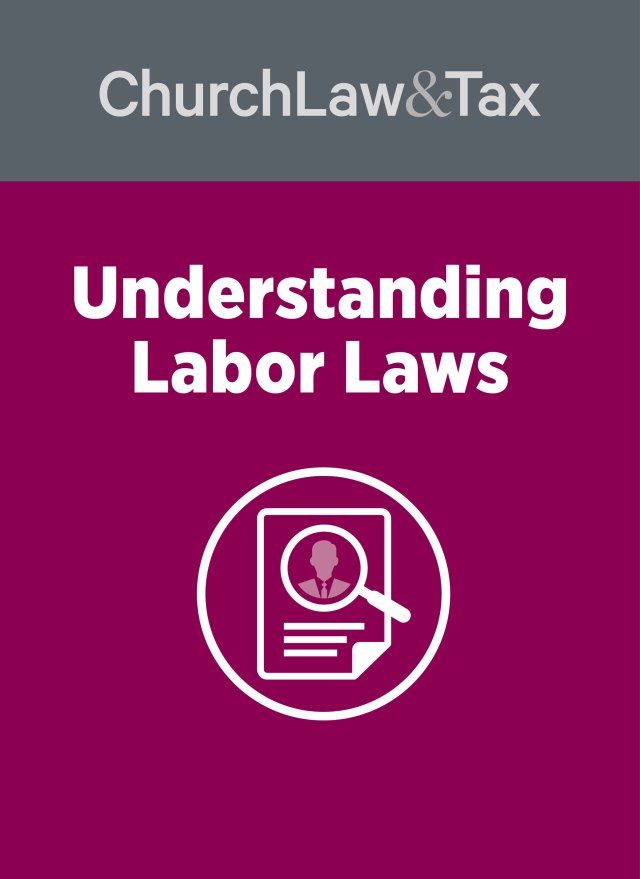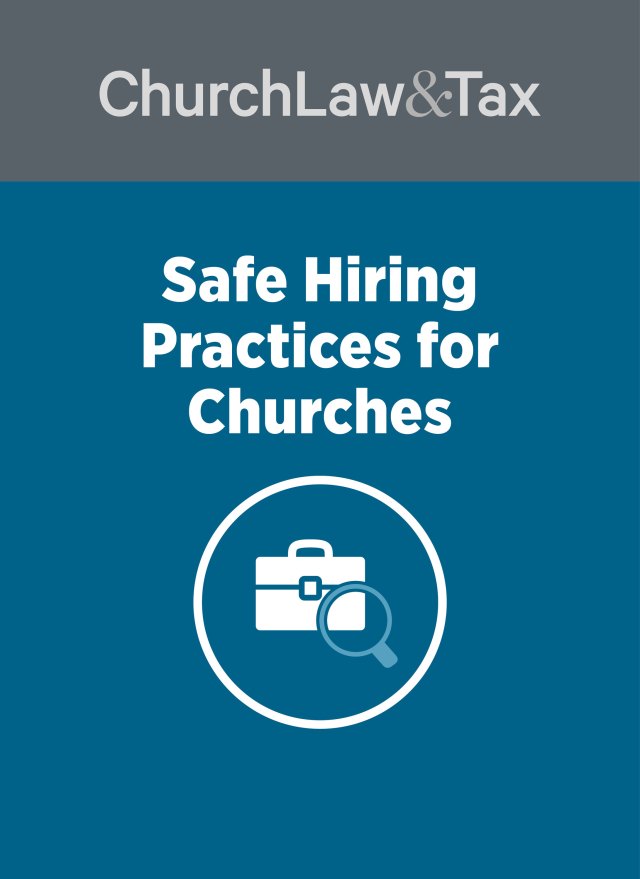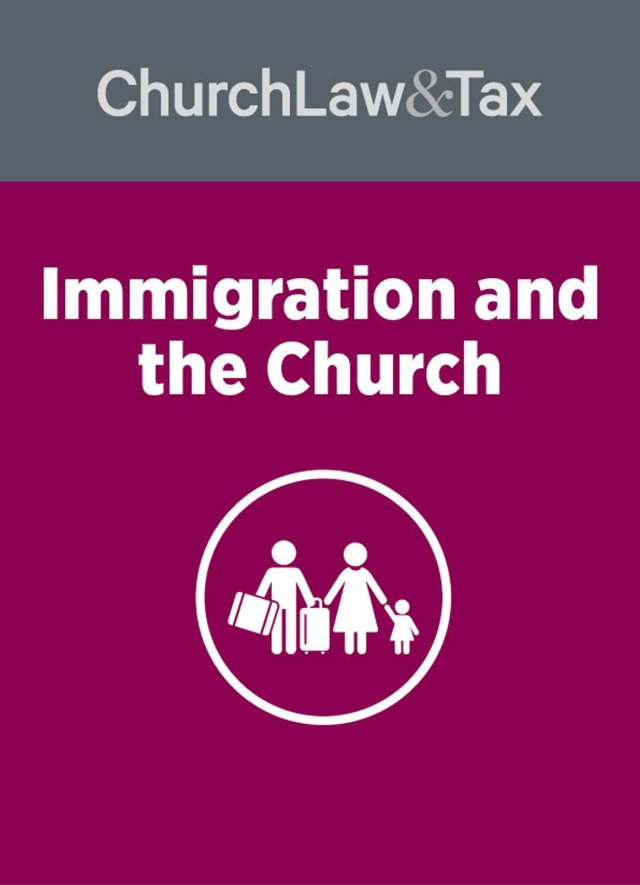Key point 8-05.1. Many federal employment and civil rights laws apply only to those employers having a minimum number of employees. In determining whether or not an employer has the minimum number of employees, both fulltime and part-time employees are counted. In addition, employees of unincorporated subsidiary ministries of a church are counted. The employees of incorporated subsidiary ministries may be counted if the church exercises sufficient control over the subsidiary.
Key point 8-12. Title VII of the Civil Rights Act of 1964 prohibits employers engaged in commerce and having at least fifteen employees from discriminating in any employment decision on the basis of race, color, national origin, gender, or religion.
A federal district court in Kentucky ruled that only employers with at least fifteen employees are subject to the nondiscrimination provisions of Title VII of the Civil Rights Act of 1964, and that the fifteen-employee requirement could not be achieved by combining a church’s employees with the employees of a retirement home that it owned. A male employee (the “plaintiff”) of a church-affiliated retirement home sued his employer, alleging sexual harassment and discrimination in violation of Title VII of the Civil Rights Act of 1964. Title VII prohibits any employer, including a church, that is engaged in commerce and that has fifteen or more employees from discriminating in any employment decision as a result of a person’s race, color, national origin, sex (including sexual harassment), or religion. The plaintiff alleged he was sexually harassed over a period of five years by a female supervisor.
The retirement home employed no more than six employees for twenty weeks or more during the years of the alleged harassment. Its board of directors consisted of eleven unpaid volunteers with paid occupations separate from their volunteer duties on the board. The plaintiff sued the retirement home, claiming that the supervisor’s acts constituted sexual harassment in violation of Title VII for which the home was liable. The home asked the court to dismiss the case on the ground that it did not employ a sufficient number of employees to satisfy either the fifteen-employee requirement for Title VII or the eight-employee requirement under a similar state civil rights law. In response, the plaintiff insisted that the retirement home and church are so “interrelated” that they were a “single employer” with a sufficient number of employees to satisfy the employee requirements.
the “single employer” doctrine
The court noted that the single employer doctrine has been applied in Title VII employment discrimination cases “often as a back-door means of satisfying the statute’s numerosity requirement.” It explained the doctrine as follows:
In determining whether to treat two entities as a single employer, courts examine the following four factors: (1) interrelation of operations; i.e., common offices, common record keeping, shared bank accounts and equipment; (2) common management, common directors and boards; (3) centralized control of labor relations and personnel; and (4) common ownership and financial control. None of these factors is conclusive, and all four need not be met in every case. Nevertheless, control over labor relations is a central concern. Quoting Swallows v. Barnes and Noble Book Stores, Inc., 128 F.3d 990 (6th Cir. 1997).
The burden is on a plaintiff to present facts that satisfy this four-part “single employer” test.
The court agreed with the church that “there is no evidence that the operation of the [home] and the church are interrelated.” It concluded:
The home maintains its own offices, records, bank accounts and equipment which is physically separate from the church. The day-to-day operations of the home are not run by the church, but by [an outside company] pursuant to a management plan …. [The outside company] did not contract with, or answer to, the church for the services it provides to the home. Nor does it provide any services to the church.
Moreover, there is no centralized control of labor relations between the home and the church. The church is governed by a majority vote of its entire membership on all church matters, including personnel issues, while the home is governed by a board of directors consisting of eleven unpaid volunteers. Although the bylaws of the home dictate that the pastor of the church also serve as chairman of the home’s board, his position represents only one out of eleven votes on the board. The remaining ten board members are volunteers. These board members have occupations separate and apart from their volunteer obligations to the home. Despite the fact that all the board members attend the church, there is no evidence that the home’s board members are required to consult with or seek approval of the church when making operational decisions affecting the home. Importantly, there is no evidence that the church has any authority to terminate or affect the employment of the home’s employees.
Finally, there is no evidence of common ownership or financial control between the church and the home. The assets of the home are owned by the individual “members” of the home’s board—the church has no “ownership” stake in the home. The home’s board, without input or approval of the church, approves an annual budget for the home, and [the outside company] provides management assistance in daily operations. The home’s revenues are not from the church, but result from rent receipts and government subsidies.
The court concluded, in light of these facts, that the church and home were not a “single employer” according to the four-factor test that it applied. It conceded that “there is indeed overlap” between the two due to the fact that the home’s board of directors consists solely of church members, but this fact alone did not “overcome the lack of evidence with respect to interrelation of operations, centralized control of labor relations, or common financial control.”
Application. Many churches operate affiliated entities. Common examples include schools and preschools. It is important for church leaders to understand that the courts in some cases may treat a church and an affiliated ministry as a “single employer” in deciding if the church has the requisite number of employees for a federal nondiscrimination law to apply, meaning that the employees of the church and the affiliate will be combined in making this determination. However, the employees of both entities will not be combined in all cases. The courts generally consider the following four factors in deciding whether or not to combine employees: (1) interrelation of operations; i.e., common offices, common record keeping, shared bank accounts and equipment; (2) common management, common directors and boards; (3) centralized control of labor relations and personnel; and (4) common ownership and financial control. Note that none of these factors is conclusive, and all four need not be met in every case.
The court concluded that the church and its retirement home were not a single employer, even though the members of the home’s board were church members. It based this conclusion on the following analysis:
Interrelation of operations
- The home maintains its own offices, records, bank accounts and equipment, all of which are physically separate from the church.
- The day-to-day operations of the home were not run by the church, but by a management company pursuant to a management agreement.
- The management company did not contract with, or answer to, the church for the services it provided to the home. Nor does it provide any services to the church.
Common management, common directors and boards
- Although the bylaws of the home dictated that the pastor of the church also served as chairman of the home’s board, his position represented only one out of eleven votes on the board. The remaining ten board members were volunteers.
- Despite the fact that all the home’s board members attended the church, there was no evidence that the home’s board members were required to consult with or seek approval of the church when making operational decisions affecting the home. Importantly, there was no evidence that the church has any authority to terminate or affect the employment of the home’s employees.
Centralized control of labor relations and personnel
- There was no centralized control of labor relations between the home and the church. The church was governed by a majority vote of its entire membership on all church matters, including personnel issues, while the home was governed by a board of directors consisting of eleven unpaid volunteers.
Common ownership and financial control
- The assets of the home were owned by the individual members of the home’s board—the church had no ownership stake in the home. The home’s board, without input or approval of the church, approved an annual budget for the home, and the management company provided management assistance in daily operations.
- The home’s revenues are not from the church, but result from rent receipts and government subsidies. Sanford v. Main Street Baptist Church Manor, Inc., 2009 WL 4167938 (E.D. Ky. 2009).
Resource. The degree of separateness between a church and an affiliate that is required to build an effective liability firewall is a complex question that is addressed fully in chapter 10 of Richard Hammar’s four-volume set, Pastor, Church & Law (4th ed. 2008), available by calling 1-800-222-1840 or visiting ChurchLawAndTaxStore.com, or through a membership on our website, ChurchLawAndTax.com.
This Recent Development first appeared in Church Law & Tax Report, May/June 2011.




